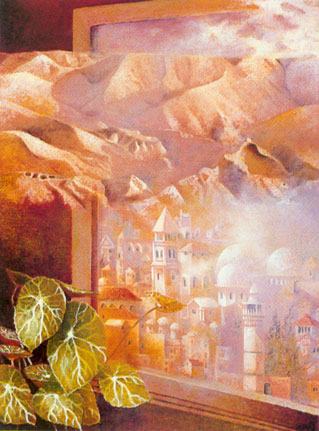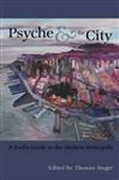Psyche and the City: A Soul’s Guide to the Modern Metropolis
Editor: Thomas Singer
Does a city have a "soul"?
How does the individual psyche—as long-time resident, recent arrival, or visitor—experience different cities?
Each city embodies distinctive psychological qualities—in its geography and architecture, its bright lights and shadowy realms, in the deep patterns that recur throughout its history, in its global connections, and in the singular lives of its past and current inhabitants. But although each is unique, all must face the archetypal, dialectical nature of the cosmopolitan itself, as well as the particular tensions, terrors, and promises common to modern urban life world-wide.
The contributors to Psyche & the City are all Jungian analysts and cultural thinkers, working with a notion of "soul" that comprehends both spirit and matter, bridging dualistic conceptions while recognizing the inherent value of each individual perspective. Writing specially for this volume, the authors freely employ personal anecdote and reverie, factual background, biography, imaginal amplification, and creative speculation to evoke the souls of their own home cities.
This book is a hymn to the soul intended not only for readers familiar with Jungian ideas, but for anyone who cares about the state of their own soul, about their fellow citizens, and about the soul of the city itself.

Painting by Benjamin Schiff
Excerpt from:
Erel Shalit
Jerusalem: Human Ground, Archetypal Spirit
Unlike Rome, not all roads lead to Jerusalem, and those that do may all too easily lead the visitor astray in a labyrinth of divinity and madness. In the course of history, when Rome became the center of power, sanctity and glory, Jerusalem sank into spiritual ruin and peripheral oblivion. Thus, even those modern roads that bring you smoothly to the city may force the pilgrim to pass “through thorny hedges…” of his or her mind.
One may conveniently approach Jerusalem from the west, ascending the modern highway, which climbs eastward through the Judean Hills–like a Western mind moving toward the Orient. By approaching Jerusalem driving on the comfortable asphalt that smoothly covers the ground and softens the bumps, one may arrive only to find a noisy and neglected city, tired by too much spirit and worn out by too much poverty. Slowly winding upward through the hills, parallel to the highway, runs the dusty old donkey path, burdened by archetypal history. Arriving this way, one may find the sparks of illumination that shine from within the dry stones, as well as the strife and conflict that cut through the rocks of Jerusalem.
Alternatively, one may proceed toward Jerusalem on the Route of the Patriarchs, from the desert in the east. This is the path on which the ancient Hebrews arrived, as they crossed the river into the land of Canaan, thus gaining their name and reputation as Hebrews, which means “those that came from across the river.”
One may capture Jerusalem by drawing the sword against evil spells, as did King David from the Jebusites three millennia ago, or enter the city humbly on a donkey, like Jesus did and any future Messiah is supposed to do as well, or like the Caliph Omar majestically riding on a white camel. In whatever way one arrives, the visitor must be ready to overcome the obstacles of Earthly Jerusalem, which far from always mirrors her Heavenly Sister’s image of completeness and redemption.
“Crouched among its hills,” Jerusalem is immersed with mythological, religious, and symbolic significance. Yet, scarce in natural resources, the surrounding land is cultivated rather than fertile by nature, and the so-called Jerusalem stone, the pale limestone that characterizes many of the city houses, nearly cracks and shatters by carrying the burden of Heavenly Jerusalem. In its often shabby garb, terrestrial Jerusalem seems to want to shake off its Celestial Glory, releasing itself from the task of being “the gateway to heaven.” At other times, when the light from above is reflected in her harsh stones, Jerusalem seems to embrace the presence of the Shekhinah, the earthly dwelling of the divine. Especially at dawn and at dusk, the reflection of the light may bring that which is below and that which is above, earth and heaven, reality and imagination into play with each other–marble-like clouds weighing heavily above, and stones that radiate light.
The Cities:
Bangalore • Berlin • Cairo • Cape Town • Jerusalem • London • Los Angeles • Mexico City • Montreal • Moscow • New Orleans • New York • Paris • San Francisco • Sao Paulo • Shanghai • Sydney • Zurich
The Contributors:
Paul Ashton • Gustavo Barcellos • John Beebe • Nancy Furlotti • Jacqueline Gerson • Christopher Hauke • Thomas Kelly • Thomas Kirsch • Antonio Karim Lanfranchi • Charlotte Mathes • Elena Pourtova • Kusum Dhar Prabhu • Joerg Rasche • Craig San Roque • Erel Shalit • Heyong Shen • Thomas Singer • Murray Stein • Craig Stephenson • Viviane Thibaudier • Beverley Zabriskie • Luigi Zoja
| ***** |
|
Praise for Psyche and the City
"Psyche & the City will affect how you feel about cities—even cities you may think you know. It is full of insight and rich context, its chapters coming from deep within the well-examined soul of each author, confirming that when the unconscious is your partner, you will never be alone, even in a large city; and however "down" one feels today, tomorrow may bring the event, the word, the sight that causes your spirit to soar."
FORMER SENATOR BILL BRADLEY
"The focus is on the dialectic at play in modernity, in cities as centres of social existence but also as places of alienation from the communal level of life. The editor, Thomas Singer, has orchestrated a composition ranging in mood across a spectrum that includes indigo, emerald, leaden gray, silver, nigrescence, albescence, blood red, gold—the soul of each city depicted in its myriad tonal colours by each author. Highly recommended for all those whose souls have been part-nurtured, part-benumbed by modern city life."
ANN CASEMENT, PSYCHOANALYST, FELLOW OF THE ROYAL ANTHROPOLOGICAL INSTITUTE
|
|
||||||||||||||||||||||||||||||||||||||||||||||||||||||

























